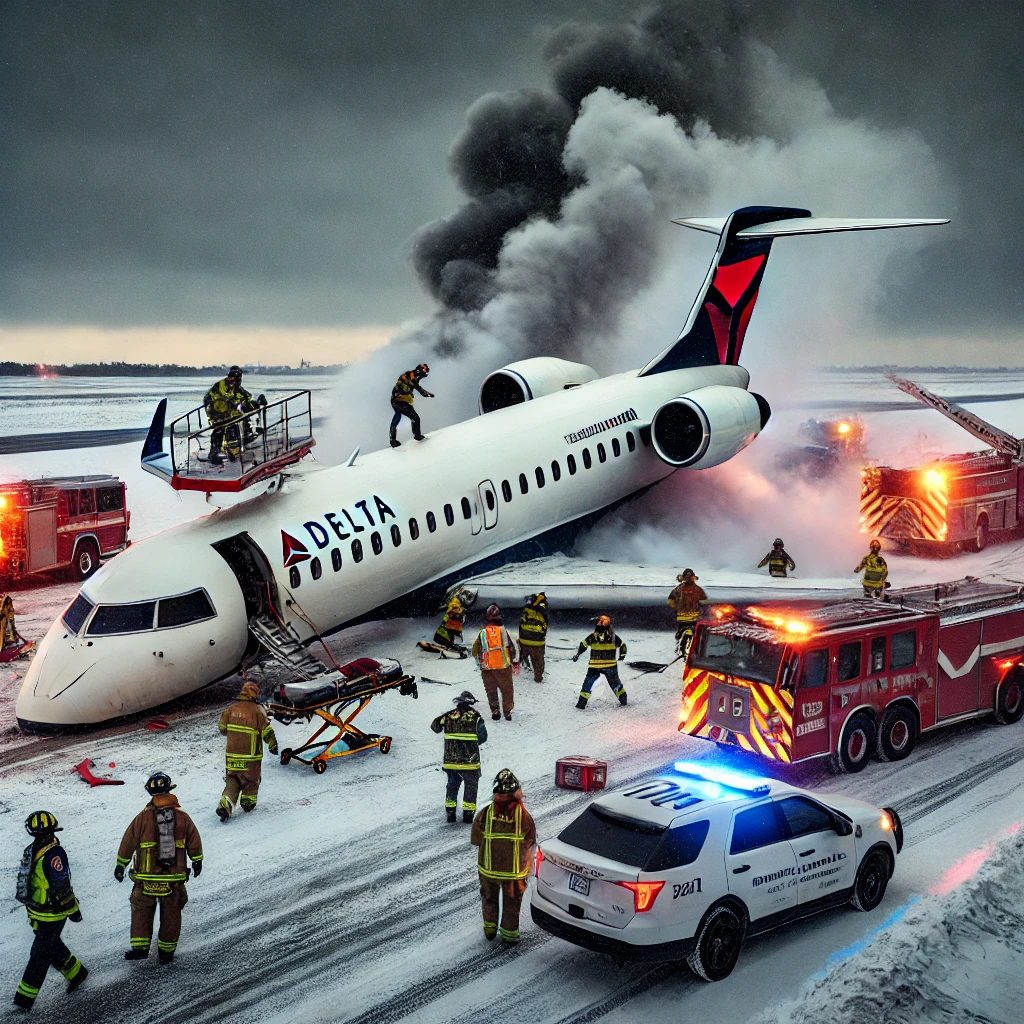Introduction
A Delta Airlines plane crash-landed at Toronto Pearson International Airport, leaving investigators piecing together the events that led to the terrifying incident. Fortunately, all passengers and crew members survived, but the crash caused injuries and widespread disruptions. Let’s dive into what happened, passenger experiences, weather conditions, and ongoing investigations.
Incident Overview
On February 17, 2025, Delta Connection Flight 4819, operated by Endeavor Air, was making its way from Minneapolis-Saint Paul International Airport to Toronto Pearson International Airport. The aircraft, a Bombardier CRJ900LR, encountered difficulties upon landing, skidding out of control before flipping upside down on the runway.
Passenger Experiences
Passengers onboard described the crash as “terrifying” and “chaotic.” Many reported a violent impact upon landing, with the plane skidding sideways before flipping over. One traveler mentioned seeing a fireball on the left side, while another recalled the strong smell of jet fuel filling the cabin as emergency personnel rushed to the scene.
Weather Conditions at the Time
At the time of the crash, Toronto Pearson Airport was experiencing strong winds of up to 64 km/h, along with blowing snow. While airport authorities had cleared the runways, reports suggest that slippery conditions may have contributed to the aircraft’s loss of control.

Casualties and Injuries
Although all 80 people onboard (76 passengers and four crew members) survived, 18 individuals sustained injuries, including one child. Emergency services quickly responded, treating passengers for minor to moderate injuries.
Flight Disruptions and Airport Impact
The crash led to significant disruptions at Toronto Pearson International Airport. Several inbound flights were diverted to other airports, including Montreal, Ottawa, and Hamilton. Some transatlantic flights, such as British Airways Flight 99 from London and TAP Air Portugal Flight 259 from Lisbon, were forced to turn back mid-flight, causing frustration among passengers.
Investigation Underway
The Transportation Safety Board of Canada, alongside the U.S. National Transportation Safety Board and the Federal Aviation Administration, has launched an in-depth investigation. Authorities are analyzing flight data recorders and cockpit voice recordings to determine the cause of the crash. Investigators are also examining the possibility of pilot error, mechanical failure, and adverse weather conditions.
Recent Aviation Incidents Raise Concerns
This Delta plane crash is the latest in a series of aviation accidents in North America. Safety experts are raising concerns about aircraft maintenance, pilot training, and weather preparedness, emphasizing the need for improved safety protocols.
Conclusion
The Delta plane crash at Toronto Pearson International Airport was a terrifying incident that could have had a much worse outcome. While all passengers survived, the accident underscores the importance of rigorous safety measures in air travel. Investigators continue to probe the cause of the crash, hoping to prevent similar incidents in the future.
FAQs
1. What caused the Delta plane crash in Toronto?
Investigators are still determining the cause, but possible factors include weather conditions, pilot error, or mechanical failure.
2. Were there any fatalities in the Delta plane crash?
No, all 80 people onboard survived, but 18 individuals sustained injuries.
3. How did passengers describe the crash?
Passengers reported a violent landing, skidding, and flipping of the aircraft, with some witnessing a fireball on impact.
4. What impact did the crash have on airport operations?
The crash led to flight diversions and cancellations, affecting both domestic and international travel.
5. Who is investigating the incident?
The Transportation Safety Board of Canada, along with U.S. aviation authorities, is leading the investigation.


